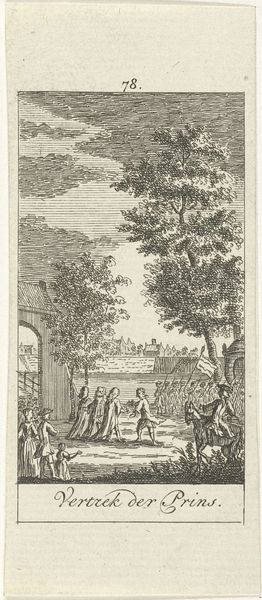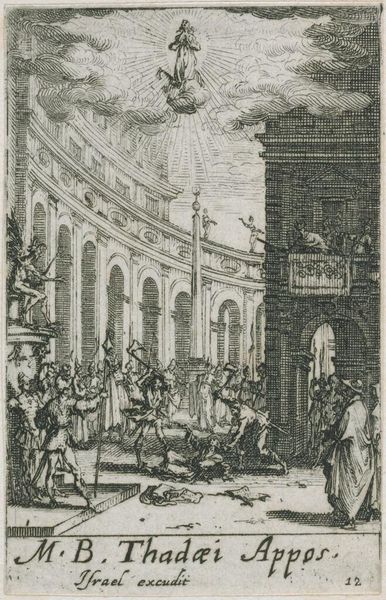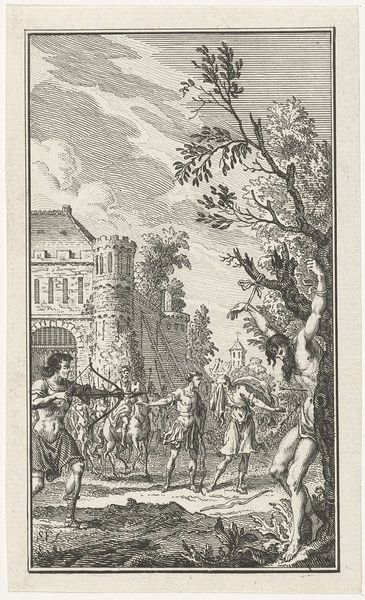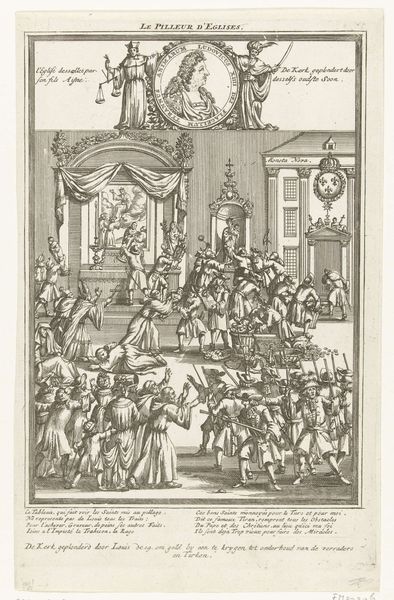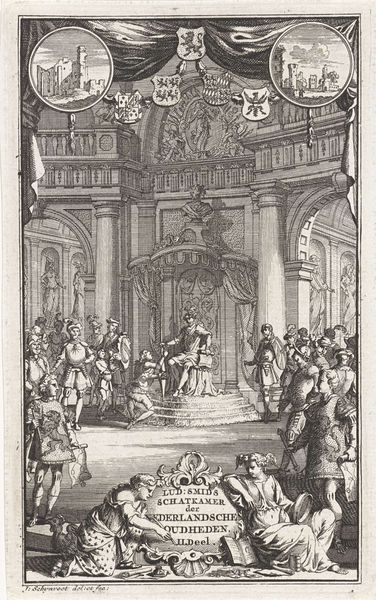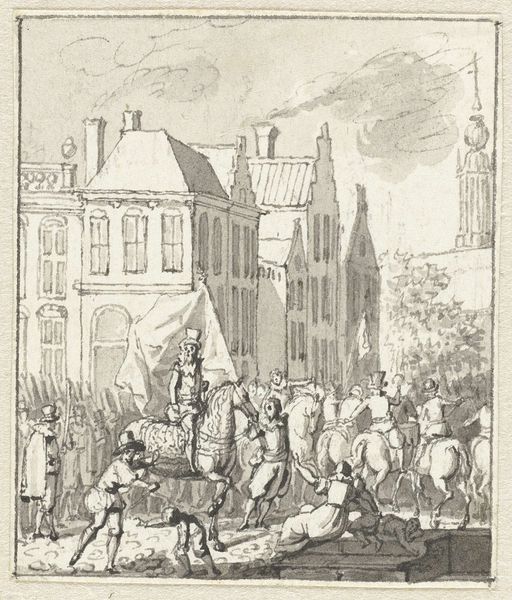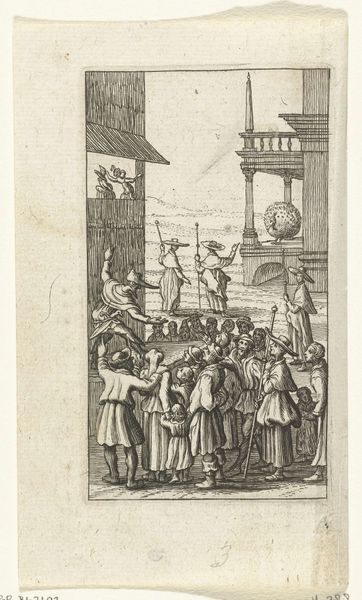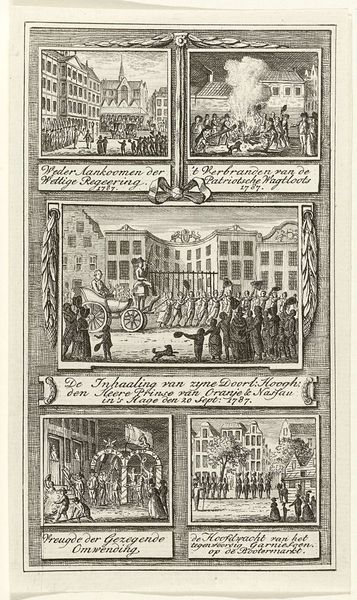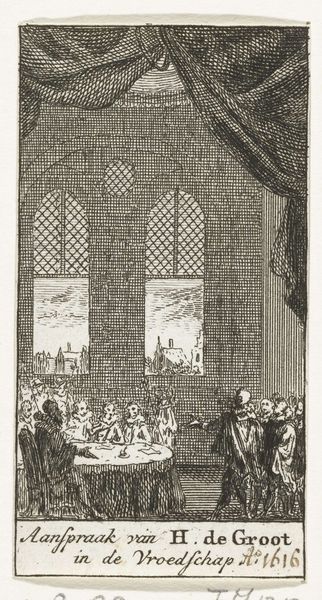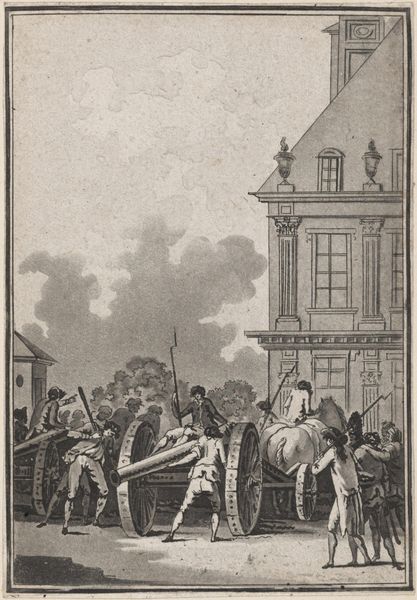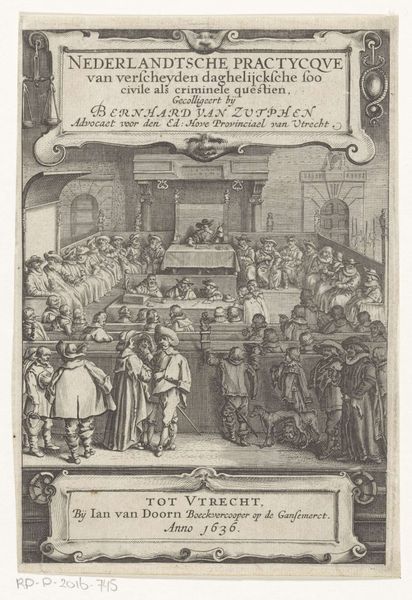
Plundering van het huis van kapitein Spaaroog tijdens het Aansprekersoproer te Amsterdam, 1696 1779 - 1781
0:00
0:00
simonfokke
Rijksmuseum
Dimensions: height 80 mm, width 41 mm
Copyright: Rijks Museum: Open Domain
Curator: This is a print made between 1779 and 1781 by Simon Fokke titled, "Plundering van het huis van kapitein Spaaroog tijdens het Aansprekersoproer te Amsterdam, 1696," depicting the sack of Captain Spaaroog’s house during the Undertakers' Riot in Amsterdam. Editor: It’s chaos! The scene bursts with figures flinging objects from windows. The dense, cross-hatched lines amplify the sense of upheaval. I notice the detailed rendering of architecture juxtaposed against the raw energy of the crowd. Curator: Indeed. This engraving provides a visual record of a specific moment in Amsterdam's social and political history. The Aansprekersoproer, or Undertakers' Riot, was triggered by resentment towards the undertakers' guild and their perceived exploitation of funeral practices. Fokke's rendering immortalizes the public's rage. Editor: And look at the building materials almost bursting. You get a sense of the economic conditions through the portrayal of not only the wealthy Spaaroog residence, but also the tools, clothing and objects flying out the windows and across the water – you sense how goods circulated and the tension that existed for some around issues of economic opportunity. Curator: Precisely. The act of plundering isn't simply about theft; it's a redistribution of wealth, a challenge to the existing power structures, and highlights the historical struggles around social and economic disparity. Whose labour allowed for these riches in the first place? Editor: Also, how the very technique of printmaking democratized the spread of information. By using engraving, it’s meant to be consumed by a mass audience – it gives this historical moment a longevity, in some ways memorializing and making monumental this moment of upheaval. Curator: Absolutely. Consider the ways in which history is made and remade through this type of visual medium. It immortalizes those tensions, even canonizes resistance in ways that should provoke analysis. Editor: Seeing this print, I am reminded of how important it is to examine the making of historical moments and the impact of materials on its lasting legacy. Curator: For me, this print reminds us how crucial it is to investigate art in its socio-political environment, understanding its capacity to reveal not just the story itself, but to consider whose stories go untold, particularly in moments of strife and resistance.
Comments
No comments
Be the first to comment and join the conversation on the ultimate creative platform.


